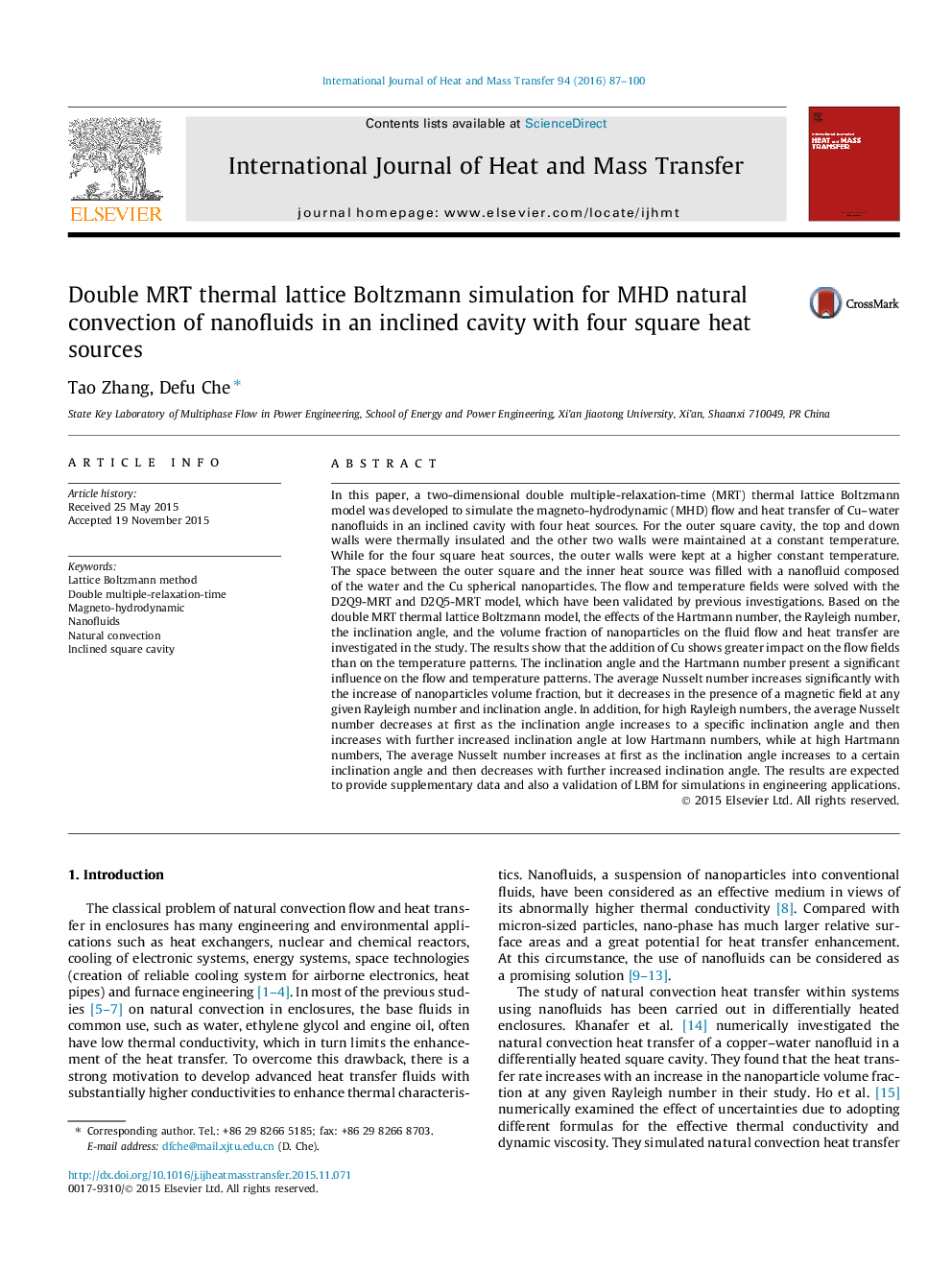| کد مقاله | کد نشریه | سال انتشار | مقاله انگلیسی | نسخه تمام متن |
|---|---|---|---|---|
| 7055910 | 1458048 | 2016 | 14 صفحه PDF | دانلود رایگان |
عنوان انگلیسی مقاله ISI
Double MRT thermal lattice Boltzmann simulation for MHD natural convection of nanofluids in an inclined cavity with four square heat sources
دانلود مقاله + سفارش ترجمه
دانلود مقاله ISI انگلیسی
رایگان برای ایرانیان
کلمات کلیدی
موضوعات مرتبط
مهندسی و علوم پایه
مهندسی شیمی
جریان سیال و فرایندهای انتقال
پیش نمایش صفحه اول مقاله

چکیده انگلیسی
In this paper, a two-dimensional double multiple-relaxation-time (MRT) thermal lattice Boltzmann model was developed to simulate the magneto-hydrodynamic (MHD) flow and heat transfer of Cu-water nanofluids in an inclined cavity with four heat sources. For the outer square cavity, the top and down walls were thermally insulated and the other two walls were maintained at a constant temperature. While for the four square heat sources, the outer walls were kept at a higher constant temperature. The space between the outer square and the inner heat source was filled with a nanofluid composed of the water and the Cu spherical nanoparticles. The flow and temperature fields were solved with the D2Q9-MRT and D2Q5-MRT model, which have been validated by previous investigations. Based on the double MRT thermal lattice Boltzmann model, the effects of the Hartmann number, the Rayleigh number, the inclination angle, and the volume fraction of nanoparticles on the fluid flow and heat transfer are investigated in the study. The results show that the addition of Cu shows greater impact on the flow fields than on the temperature patterns. The inclination angle and the Hartmann number present a significant influence on the flow and temperature patterns. The average Nusselt number increases significantly with the increase of nanoparticles volume fraction, but it decreases in the presence of a magnetic field at any given Rayleigh number and inclination angle. In addition, for high Rayleigh numbers, the average Nusselt number decreases at first as the inclination angle increases to a specific inclination angle and then increases with further increased inclination angle at low Hartmann numbers, while at high Hartmann numbers, The average Nusselt number increases at first as the inclination angle increases to a certain inclination angle and then decreases with further increased inclination angle. The results are expected to provide supplementary data and also a validation of LBM for simulations in engineering applications.
ناشر
Database: Elsevier - ScienceDirect (ساینس دایرکت)
Journal: International Journal of Heat and Mass Transfer - Volume 94, March 2016, Pages 87-100
Journal: International Journal of Heat and Mass Transfer - Volume 94, March 2016, Pages 87-100
نویسندگان
Tao Zhang, Defu Che,